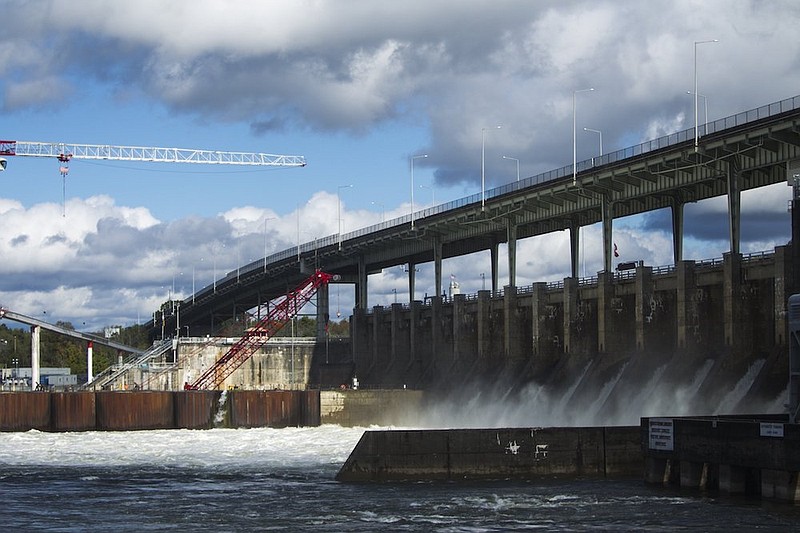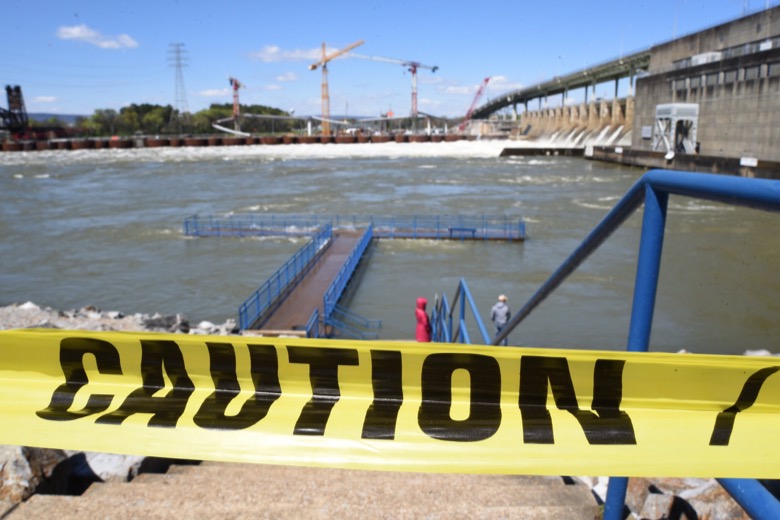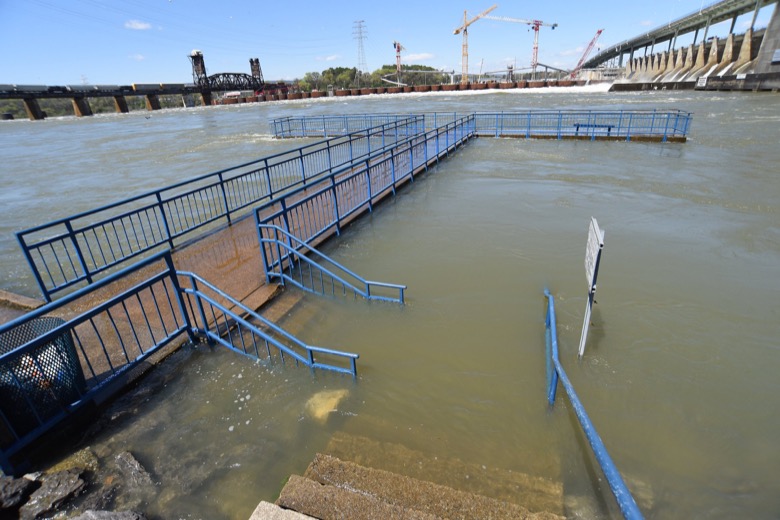Chattanooga is the primary drainage path for rainfall across the eastern half of the Tennessee Valley, making the Scenic City the biggest beneficiary of the more than $10 billion of averted flood damage from the dams erected by the Tennessee Valley Authority and the Army Corps of Engineers over the past century.
But Nashville emerged as the biggest beneficiary of the river dams in the region during the past winter. The 10 Nashville area dams in the Cumberland River basin erected by the Army Corps of Engineers prevented an estimated $1.8 billion in flood damages in March, according to a new report by the Corps.
More than 7 inches of rain dumped on Nashville March 27 and March 28 - the second highest two-day total since records rainfall records began to be kept in 1871. The Cumberland River that flows through downtown Nashville reached 40.55 feet during the peak of the March flood, or nearly 7 inches above flood stage.
Without the Corps dams and other flood control measures on the river, the Corps estimates that the river would have risen more than 15 feet higher than it did, eclipsing the May 2010 flood by nearly four feet. Only the record flood of 1927 was worse.
By contrast, the Tennessee Valley Authority's network of 49 flood control dams helped avert an estimated $137 million of flood damages in Chattanooga following nearly 10 inches of rain in March. Although Chattanooga's rainfall in March was nearly double the normal levels, Chattanooga did not have the deluge of sudden rainfall that hit Nashville this spring, according to National Weather Service records.
"Spill rates (in Chattanooga) increased through the last two weeks of March and peaked on April 2 before drifting lower and being reduced through the first two weeks of April," TVA spokesman Travis Brickey said. "Spill operations at Chickamauga concluded on April 16."
The averted flood damage by TVA this winter was less than one-fifth as great as the $772 million of averted flood damages in the winter of 2020 when Chattanooga was deluged with with an extra 7 inches of rain in February, 2020.
Robert Dillingham, hydraulic engineer in the Corps' Nashville Engineer District Water Management Section, said the four major dams on the Cumberland upstream of Nashville - Wolf Creek Dam in Jamestown, Kentucky, Dale Hollow Dam in Celina, Tennessee, Center Hill Dam in Lancaster, Tennessee and the J. Percy Priest Dam in Nashville - stored a combined 1.8 million acre-feet of water during the March high-water event.
"This equates to 586 billion gallons of water," Dillingham said. "The water was safely stored behind these dams to allow downstream unregulated floodwaters to subside. Once downstream conditions allowed, this stored water was released in a controlled fashion over a period of many weeks."
William Terry, Water Management Section chief, said the dam projects in the Cumberland River Basin, similar to the reservoirs TVA built in the 1930s along the Tennessee River, help to maintain flood control, navigation and hydroelectricity generation.
"Flooding will never be eliminated, but with the flood risk management system in place, the Corps of Engineers and agency partners often reduce the impact and damages caused by flooding," Terry said. "The entire team works hard to create hydrologic, reservoir, hydraulic, consequence and water quality computer models for real-time water management operations."
Despite the flooding in 2010 and again this year in Nashville, Chattanooga remains the city with the most potential for flooding without the network of dams and reservoirs built to help retail rainwater runuff during storms in the region. Chattanooga is the drainage point in the Tennessee River basin for more than 20,000 square miles of East Tennessee, western Virginia, western North Carolina and North Georgia. Prior to the creation of TVA in 1933, Chattanooga was nearly completely underwater during major floods in 1917 and in the worst flood ever in 1867.
"There's an enormous area that flows into the Tennessee River and goes through Chattanooga," said James Everett, director of the TVA River Operations Center in Knoxville.
TVA estimates more than 90% of the projected flood damage that would have occurred in the Tennessee Valley without its network of dams are in Chattanooga.
Çontact Dave Flessner at dflessner@timesfreepress.com or at 423-757-6340.


